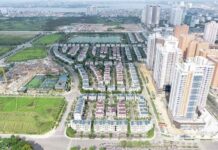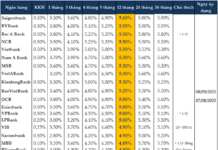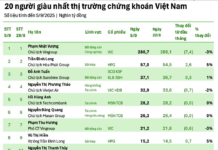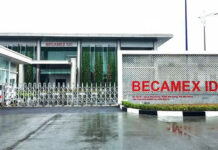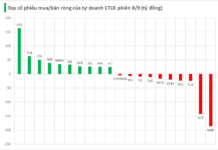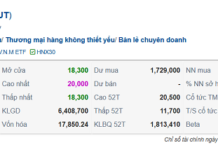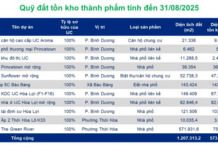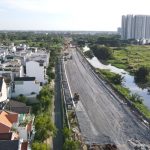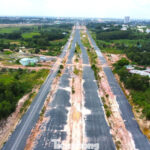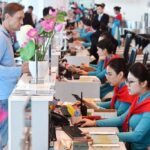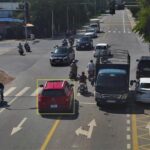According to the Investment and Construction Project for Districts or Cities in Ho Chi Minh City for the period of 2021-2030 (by the Department of Home Affairs and the HCM City Institute for Development Studies), the estimated capital need for infrastructure and socio-economic development in the five suburban districts is up to VND 242,000 billion.
This figure is provided by the research and consulting group of the Department of Planning and Architecture, along with the Department of Planning and Investment, based on practical studies and forecasts.
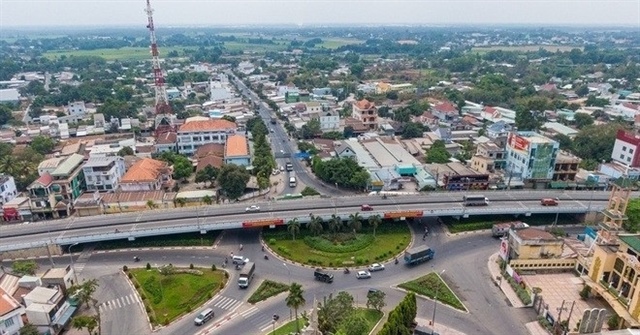 A corner of Cu Chi district seen from above. Photo: Nguyen Hue
|
Specifically, according to the research group, the districts can aim to develop suburban areas of type 3 with medium-low infrastructure quality. If this goal is set, the investment pressure is not too high, and the districts can build a roadmap to supplement some items such as surface water drainage, concentrated waste treatment areas…
With low cost, the districts can not yet invest in parks but replace them by keeping the green spaces along the canals, in the gardens…, to ensure the quality of landscape and ecosystem when the population density increases to over 2,000 people/km2.
The research group also noted that there are some areas that are very difficult to improve (such as north Binh Chanh, south Hoc Mon, north and west Nha Be) in terms of infrastructure connectivity and supplementary high-quality services. These areas can be put on hold to focus on improving more favorable areas. This approach can quickly meet the criteria for becoming urban areas and reduce the pressure of population growth in less favorable areas.
The group also calculated that, considering the investment rate for synchronous infrastructure for new urban areas of VND 9 billion/ha (according to 2021 prices), the total investment of private enterprises in new urban areas is about VND 15,000 billion.
The total amount of capital allocated for the period of 2021-2030 of the five districts is expected to be VND 91,000 billion, and it will attract private investment of VND 110,000 billion. Thus, the total capital is about VND 200,000 billion (USD 8 billion).
In which, the research group believes that attracting private capital focuses on developing new urban areas, while state capital invests in infrastructure framework and renovation of old incomplete infrastructure areas.
However, when the population increases by 1.4 million people and improves the existing infrastructure for 2.1 million people, the capital need for on-the-spot investment development (not including fast connection infrastructure) for the development of suburban districts in the period of 2021-2030 is expected to reach USD 10 billion.
And, when the districts are basically invested, there will be a breakthrough with the possibility of converting 30% of suburban land by 2030. At that time, the opportunity to recoup the added value from the land can reach VND 528,000 billion (USD 21 billion).
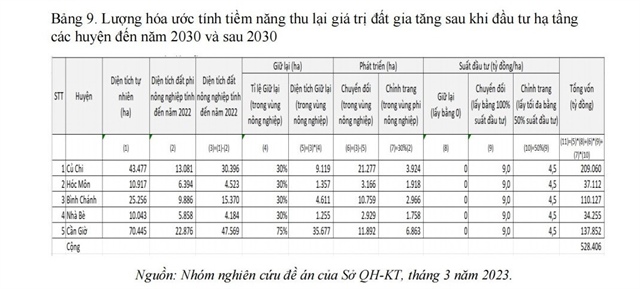
The figure of more than VND 200,000 billion in investment demand is also almost compatible with the preliminary estimate of the five districts by 2030, not including some key projects from outside.
Besides, according to the data calculated by the Department of Planning and Investment, the total public investment capital in the period of 2021-2030 (through the list of registered projects) of the five suburban districts is up to VND 131,369.8 billion, higher than the estimate of the Department of Planning and Architecture (mainly estimating the budget capital for infrastructure) of VND 91,000 billion.

This is reasonable because, in the period of 2026-2030 alone, the public investment capital demand of the five districts may be even higher because, at the present time, the project list has not been fully anticipated.
“In summary, according to the preliminary estimate, the capital need for budget investment in the five districts in the period of 2021-2030 will be at least VND 132,000 billion. If the need for private capital mobilization is taken into account, this figure could reach VND 242,000 billion,” the report said.
|
Prioritize speeding up dynamic projects From practical studies, the reporting team proposed that the People’s Committee of Ho Chi Minh City should prioritize large-scale projects with a driving force for the development of the suburban districts. Specifically, in addition to the Ring Road 3 project, the city needs to prioritize speeding up the Ring Road 4 project, which is an important project in the Southeast region, positively affecting the orientation of the five districts. Second is the Ho Chi Minh City – Moc Bai Expressway project, which was approved and started construction in 2023 and will be operational in 2025. This is a driving force project for the northwestern region of the city. The third is the Can Gio Bridge project, 3.4 km long with 4 lanes, with an approved capital of VND 5,300 billion. This is a driving force project for the southern region of the city. The fourth is the project of investing in the construction of the Can Gio international super transit port with more than 6.8 km of port, which can receive the largest ships in the world, with a total expected investment capital of about USD 6 billion. The fifth is the Can Gio sea reclamation tourism urban area project, which was approved by the Prime Minister to adjust the scale from 600 ha to 2,870 ha, with a total investment capital of more than VND 217,000 billion. This is a very important driving force project for Can Gio district in particular and Ho Chi Minh City in general, in the outer city area in the immediate and long term. |
Ho Van
2023 Remittances Surpass Half of Ho Chi Minh City’s Budget Revenue
As part of the Homeland Spring 2024 program in Ho Chi Minh City, this morning (2/2), the overseas Vietnamese delegation had a tour of the City Hall and met with city leaders.






